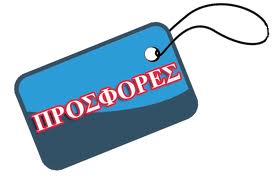 Insect Management for Food Storage and Processing, 2nd Edition (Αντιμετώπιση εντόμων κατά την αποθήκευση και επεξεργασία τροφίμων - έκδοση στα αγγλικά)
Insect Management for Food Storage and Processing, 2nd Edition (Αντιμετώπιση εντόμων κατά την αποθήκευση και επεξεργασία τροφίμων - έκδοση στα αγγλικά)
Insect Management for Food Storage and Processing, 2nd Edition
Συγγραφέας: Jerry W. Heaps
ISBN: 9781891127465
Σελίδες: 248
Σχήμα: 22 X 28
Εξώφυλλο: Σκληρό
Έτος έκδοσης: 2006
Insect Management for Food Storage and Processing, Second Edition has been completely revised and updated with new chapters on topics including inspection techniques; retail pest management; environmental manipulation (e.g., hot, cold, modified atmospheres, ionization) to control insects; and the latest scientific research on integrated pest management (IPM) control techniques. Common and unusual exterior/interior pest insects are covered and examples of both chemical and non-chemical pest insect control strategies are thoroughly discussed. The book provides the latest practical and scientific research information on how to solve pest insect problems in a timely and economical manner.
Chapter authors are recognized around the world as experts in their respective fields. Scientific language is put in simple terms so those working in a food plant or warehouse environment can easily take information from the chapters and apply it for effective pest insect control strategies. Control methods explained have survived the test of time. This edition is timely due to the rapidly changing pesticide and food safety regulatory environment food processing personnel must work in every day.
Chapter information presented is original research that contains basic reference material, literature reviews, and actual pest insect case histories that authors have experienced with control methods that work. The book is written so its readers can pick it up and use it as a ready reference right on the plant floor. It�s a must read for commercial and structural pest control operators, technicians, or directors; food plant inspectors, auditors, and plant sanitarians; as well as QA managers, food safety consultants, and university extension personnel.
Contents
Introduction
Pest Identification; Holistic Pest Management; Prevention: Sanitation, Inspection, Monitoring, Engineering, Good Manufacturing Practices
Part I. Basics of Insect Pest Management
Integrated Pest Management Strategies for the Food Industry
Raw-Material Supplier; Food-Processing Facility: Insect-Monitoring Devices, Processing Equipment as a Control Strategy, Packaging Design Strategy, Sanitation Strategies, Product Distribution and Transport; Potential Insect-Control Strategies Under Development for the Food Industry
Role of the Pest Management Professional in Food-Processing Pest Management
Then and Now; Decisions: Contract (Outside Vendor) Pest Management: Advantages, Disadvantages; In-House Pest Management Programs: Advantages, Disadvantages; Are Shared Programs an Option?; Role of the Pest Management Professional: A Partnership, What PMPs Must Do
Inspection Techniques
Where to Begin; Exterior Grounds; Roof Areas; Plant Interior: Managing Space, Seeing the Space
Facility Inspections Supporting Insect Pest Management in the Food-Manufacturing Environment
Plant Grounds: The Immediate Plant-Exterior Environment; Building(s) Construction Elements and Maintenance: Utilities, Physical Structure, Plant Equipment, Cleaning Programs and Practices: Procedures, The Master Sanitation Schedule, Integrated Pest Management Programs, Employee Hygiene: Personnel cGMPs, Finished-Product Warehouse, Receiving: Material-Handling Programs, Shipping: Transportation Guidelines, The Inspection Report
Insect-Resistant Packaging
History of Food Packaging; Importance of Insect-Resistant Packaging; Insect Response to Food Odor; Insect Pests of Packaged Foods; Testing for Insect Resistance; Methods to Reduce Infestation
Stored-Product Insect Behavior
Exploitation of Patchy Environments: Fundamental Principles, Stored-Product Insects, Implications for Pest Management; Response to Stimuli: Fundamental Principles, Effects on Stored-Product Insects, Implications for Pest Management
Part II. Environmental and Nonchemical Manipulation
Insect Light Traps
History; Principles of Operation: Attraction�Energy (Light) Spectrum, Fluorescent Lamp Operation, Ultraviolet Lamp Types, Lamp Life Loss, Safety-Coated Ultraviolet Lamps, Trapping and Containment; Trap Construction; Regulation and Compliance Concerns; System Design: Three-Phase System, Surveying and Inspecting; Miscellaneous Facility Management for Flying Insect Control: Exclusion Strategies, Lighting, Window Tinting, Exterior Structure Color, Grounds
Biological Control of Stored Product Pests
Advantages of Biological Control; Disadvantages of Biological Control; Approaches of Biological Control; Natural Enemies: Insect Parasitoids, Insect Predators, Fungi, Granulovirus, Bacteria; Bulk Grain Storage:Predators, Parasitoids, Field Studies, Integration; Mills, Bakeries, Warehouses, and Retail Stores: Parasitoids, Predators, Nematodes, Field Studies, Integration; Future of Biological Control in Stored Products
Temperature Modification for Insect Control
Background and History of Heat Treatments; Effects of Heat on Insects; Calculating Heat Energy Requirements; Delivery of Heat Treatments: Planning, Safety Considerations During, Monitoring, Post-Heat-Treatment Activity; Case Studies: An In-House Heat Treatment of a Malting Facility, Heat Treatment of the Kansas State University Pilot Feed Mill
Modified Atmospheres for the Control of Stored-Product Insects and Mites
Background and History, Definitions and Uses of MA, Modifying the Atmosphere of the Storage Ecosystem; Effects of MA on Stored-Product Insects and Mites: Lethal Action of MA on Insects, Interrelated Physical, Environment Effects, Biochemical Effects, Physiological Effects, Behavioral Effects; Effects of MA on Product Quality: Germination of Seeds, Product Quality Preservation, Sorption of Carbon Dioxide, Corrosion Potential of Carbon Dioxide Generation and Application of MA: Generation of MA, Methods for Applying Modified Atmospheres, Sealing and Pressure Test for Gastightness, Monitoring Gas Concentrations; Specific Applications of MA: Cereal Grain Preservation, Preservation of Tree Nuts and Dried Fruits, Disinfestation of Dates, Packaging of Food, Museum Artifacts, Fresh Storage of Fruits and Vegetables, Narcissus Bulb Treatments; Economics of Treatment: Cost of Sealing, Cost of Gas, Current Usage oF MA; Research Needs: Laboratory Work, Field Work
Irradiation
Irradiation Effects on Pests; Radiation Effects on Storage Pests: Sensitivity to Radiation, Radiation Doses Required; Irradiation Equipment for Disinfestation; So, What�s New in Irradiation? Gamma Treatment of Rice, Fluid-Bed Processing of Grain; Pest Control in an Irradiation Facility
Pheromones for Stored Product Protection
A World of Odors; History of Pheromone Study; Pheromones of Stored-Product Insects; Pheromones (and Lures) Are Not Created Equal: Pheromone Types, Traps of a Different Design; Using Pheromone Traps: Know the Pest; Tips for Using Pheromone Traps; Trapping Stored-Food Moths; Trapping Stored-Food Beetles; Case Study: Distribution in Warehouse; Capturing Multiple Stored-Product Insect Species with a Pheromone Pitfall Trap: Case Study: Pet Food Retail Store
Part III. Chemical Control
Insect Management with Residual Insecticides
Classes of Residual Insecticides; Residual Insecticide Applications; Factors Affecting Residual Insecticide Performance: Sanitation, Surface Effects, Insecticide Class and Formulation, Toxicity and Exposure Interval, Environmental Effects, Insect Species and Response to Insecticides
Insecticide Space Treatments in Food Plants
The Concept of Space Treatments; Types of Equipment for Aerosol Space Treatment: Pressurized Aerosols, Mechanical Particle Generators; Compounds Used for Space Treatments: Insecticides, Insect Growth Regulators; Safety Practices; Future Research
Part IV. Safety and Environmental Health
Insecticides and Occupational Health in the Food Industry
Background; Types of Insecticides Found in the Food Industry; Usage in the Food Industry; Hazards of Insecticides; Routes of Entry and Protection Techniques; The Respiratory Protection Program; Toxicological Concepts; Safe Insecticide Usage; Determining Insecticide Exposure Concentrations; Medical Examinations; First Aid Treatment; Emergency Treatment For Insecticide Poisoning; Government Regulations
Part V. Summary






